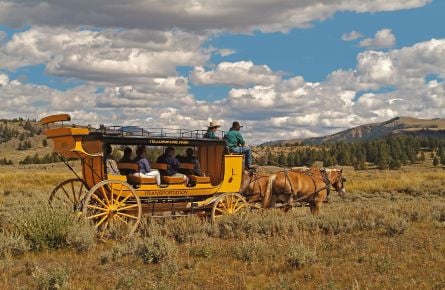Horses of Yellowstone: Tales from the Corral
Yellowstone Horses
We all know Yellowstone was set aside “for the benefit and enjoyment of the people” in 1872. But how did people access the park in the late 19th and early 20th century? A horse, of course! Between 1872 and 1916, tourists traveled by stagecoach, wagon, or horseback to see sights around the park. The tradition of seeing Yellowstone by horseback continues to this day through our horse operations at Roosevelt Corrals.
Hit the Trail
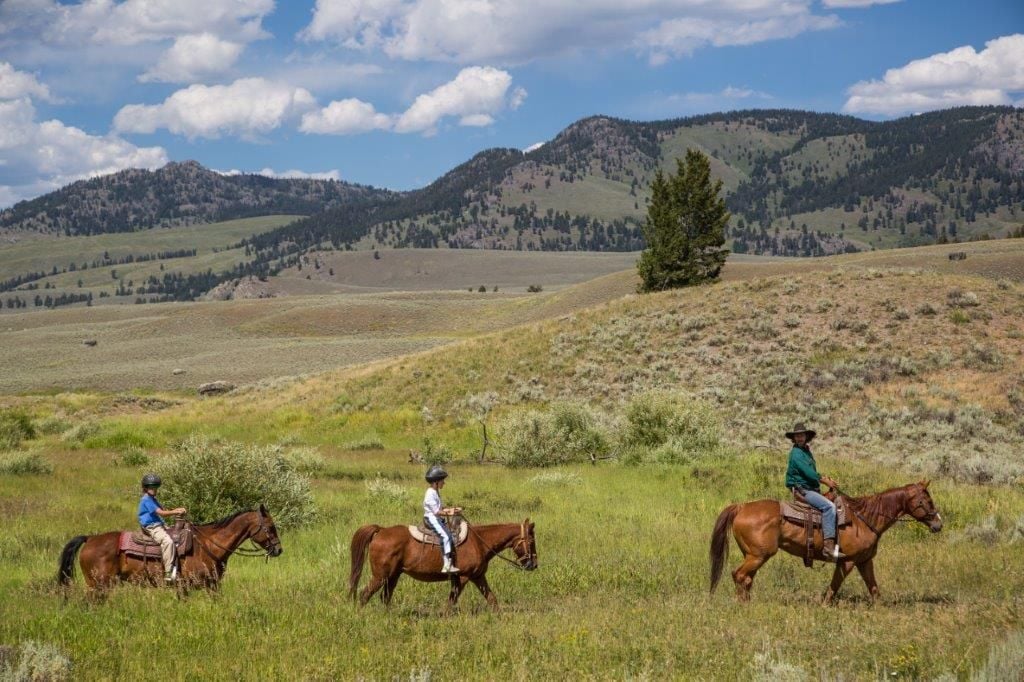
A 2018 Visitor Use Survey conducted by the National Park Service found that the top motivations for visiting Yellowstone were scenery and wildlife. A horseback ride is a perfect way to immerse yourself in both. During the summer season, daily trail rides (one or two hours) head out from the Roosevelt corrals. Depending on the location and duration of the ride you choose, you could be riding through meadows and pine forests, along creeks and canyons, or past sagebrush flats and petrified trees. And all along the way, there is a chance to see wildlife. “It’s like National Geographic every day out here,” says former Roosevelt Lodge Assistant Head Wrangler Allison Smith. Spotting moose, bear, bison, coyote, and other creatures is always a thrilling experience for guests and wranglers. But it’s just another day on the trail for Yellowstone horses.
Horses in Yellowstone
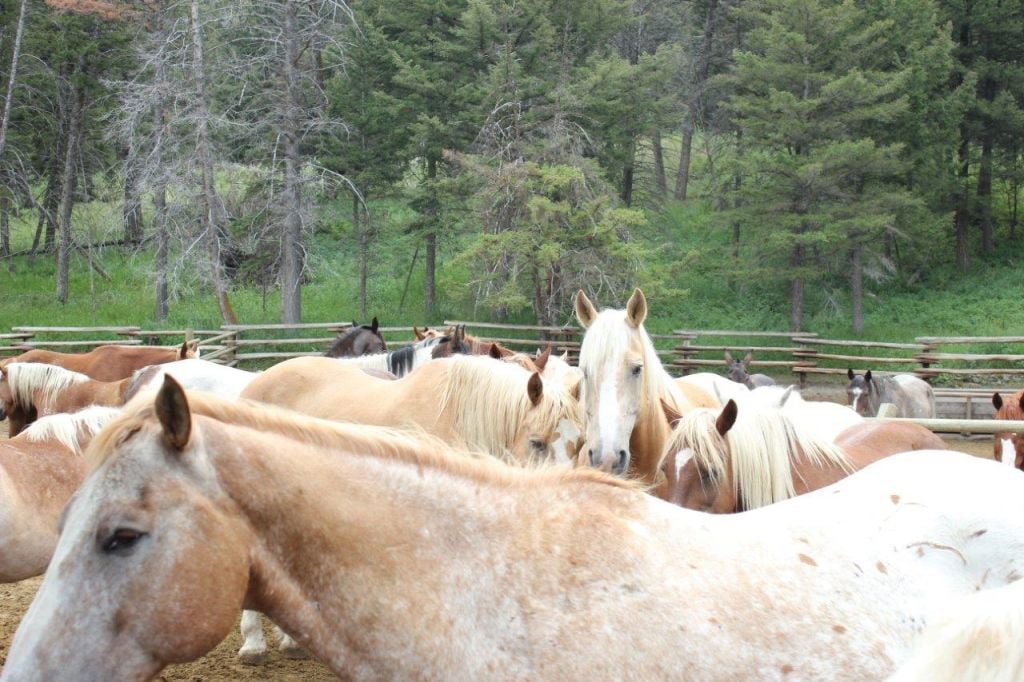
The 170 saddle horses that work each summer have adapted to Yellowstone’s unique environment. From wildlife on the trail to the smell of thermal features in the air to fast-moving summer storms, these horses know it all. And the wranglers know them. Learning the names and personalities of each member of the herd is priority number one when wranglers arrive on the job in May. It’s not easy to forget when you have unique names in the corral, like Prison Break, Porky, Mr. Jingles, and Lunchbox.
Another task for wranglers at the beginning of the season is learning about the park itself. While out on the trail, the main job of the wranglers is to keep the guests and horses safe. But they are also there to provide interpretation, itinerary inspiration, and entertainment along the way. As a guest, you may spend between one and three hours on the trail with your wranglers. “You’re getting information about the park and the history and the area and what you can do with your time later or what hikes to go on or where to see wolves,” says Allison.
Hitch the Wagons
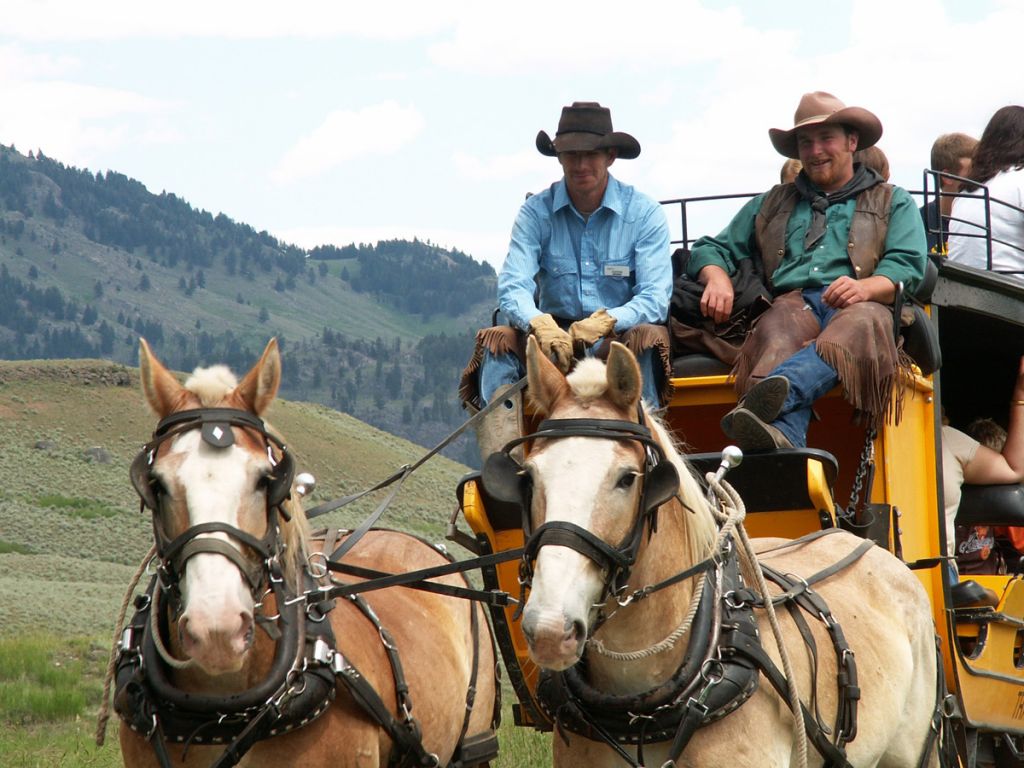
Exclusive to the Roosevelt Corrals is the Stagecoach Adventure and Old West Dinner Cookout. Thirty-four draft horses (17 teams) take guests out to Pleasant Valley, the former site of “Uncle John” Yancey’s Pleasant Valley Hotel, one of the earliest lodging facilities in Yellowstone. The hotel and outbuildings were built between 1884 and 1893 and served early park visitors as well as miners passing through en route to the mining district near Cooke City.[1] Nowadays, the hotels are gone and the area serves as the site of our Old West cookouts. That means guests are able to travel on horseback via trails that have been used for hundreds of years. “It’s cool to be able to keep that tradition alive,” says Bailee Morrison-Fogel, Roosevelt Lodge Head Wrangler alum.
Meet the Wranglers
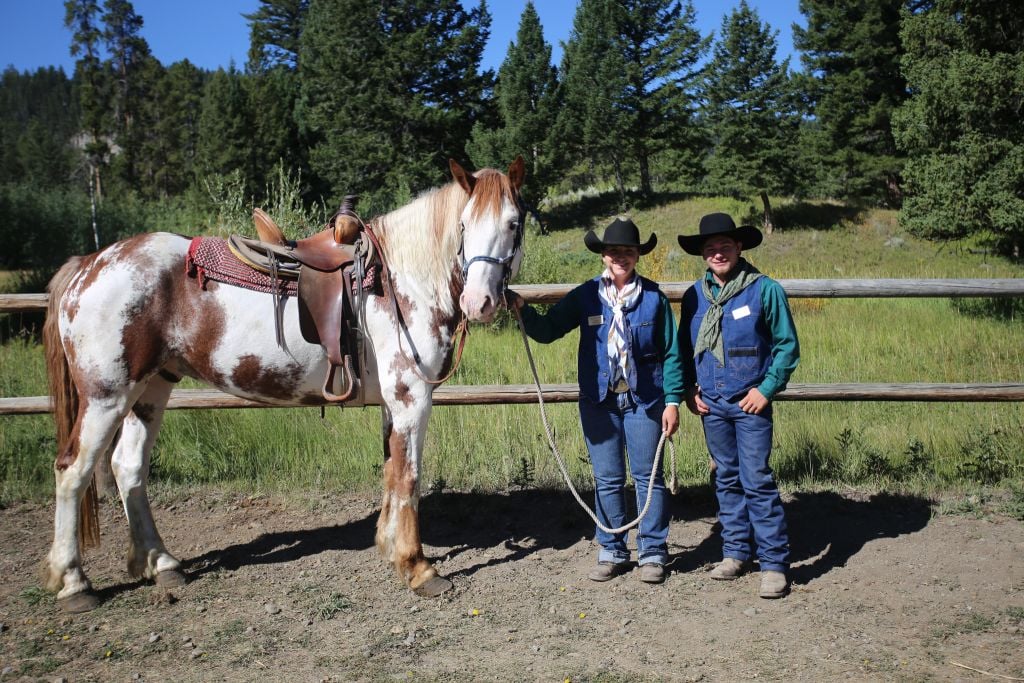
Twenty-five wranglers, twelve drivers, two trail crew, and three managers, along with three activity sales agents, are hired to staff the Roosevelt Corrals. The team cares for 34 draft horses, 85 saddle horses, 2 mules, 100 saddles and bridles, and about 40 harnesses. Between loading and unloading semi-trucks and then loading and unloading the feed wagon, they haul over 150 tons of hay. In a nod to sustainability, teams of draft horses, rather than a gas-powered truck, pull the feed wagon through the corrals. Of course, that means the manure needs to be hauled out as well, which is put to good use as it is reclaimed into fertilizer that is bought by local ranchers.
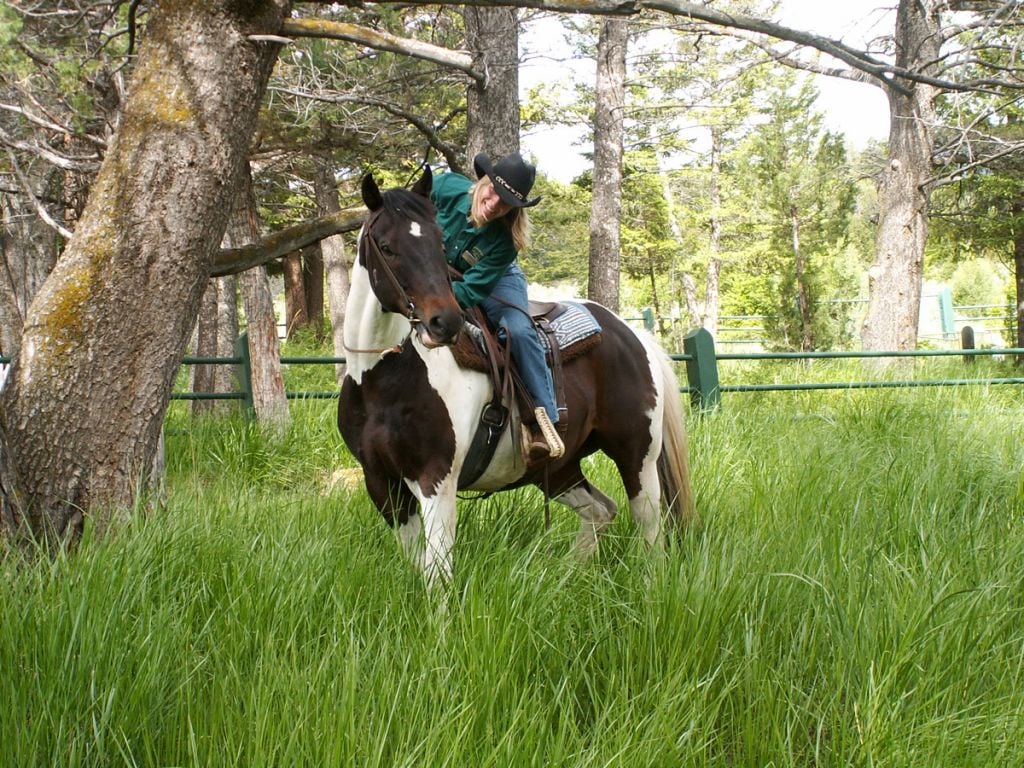
Wranglers perform the majority of their work outdoors, rain or shine, and put in long days. At Roosevelt, there are five trail rides, four stagecoach rides, and one cookout, which could host as many as 230 people. In a typical day, 45 guest horses are saddled in the morning, 7 draft horse teams are harnessed up to wagons, and 60-70 bales of hay are fed. And wranglers do it all with safety and guest service as their top priorities. Allison’s favorite part about the job? “While you might have the same schedule every day, every day is different… you get to live vicariously through other people’s vacations.” Bailee echoes this sentiment, “It’s really nice to be a part of people enjoying something that you get to be a part of, something that you create.”
Are you ready to saddle up in Yellowstone? Check out our Wild West Adventures and get ready to experience Yellowstone the way the first pioneers did.
[1] https://www.nps.gov/yell/planyourvisit/towerrplan.htm
For more travel experiences to Beautiful Places on Earth™ available from Xanterra Travel Collection® and its affiliated properties, visit xanterra.com/explore.
Want to experience Yellowstone in depth? See what makes Yellowstone National Park a great place to work for a season or longer!
Explore Wild West Adventures
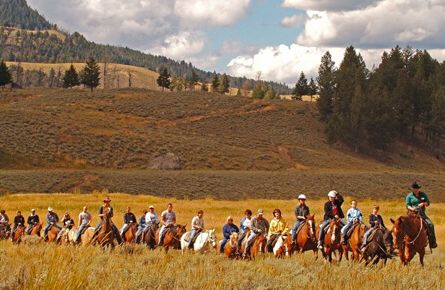
Saddle Up
Take the time to “slow down and smell the sagebrush” as you and your horse mosey along the trail.
Learn More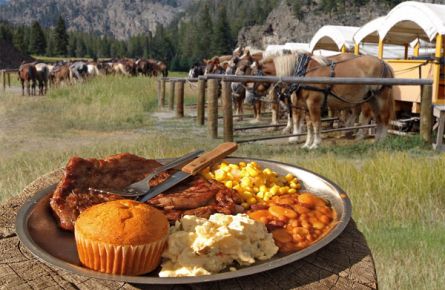
Old West Dinner Cookout
Grab the saddles and hitch up the wagon for an evening you won’t soon forget.
Learn More